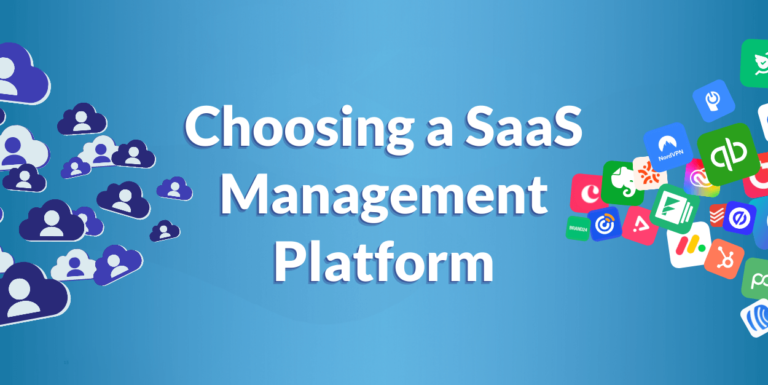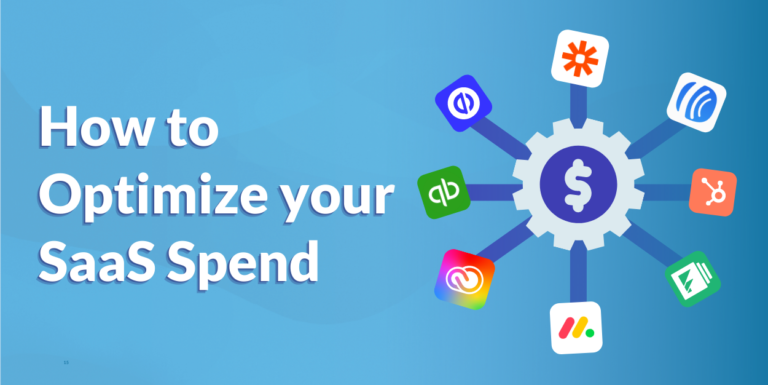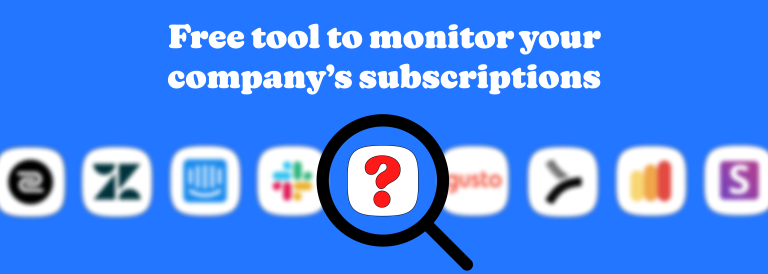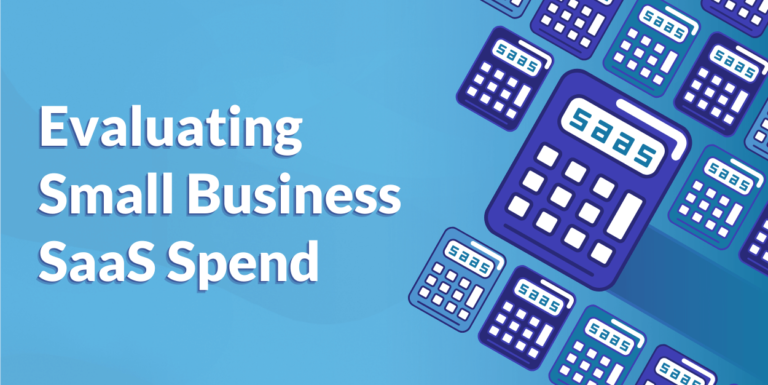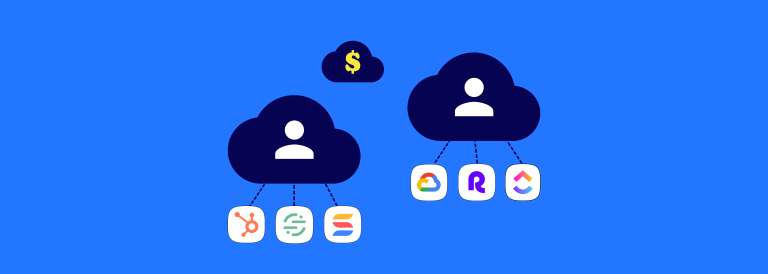SaaS Spend Management: The Solution to the SaaS Boom
From technology startups to Fortune 500 companies, the majority of organizations these days now utilize cloud-based SaaS to simplify everyday business needs. SaaS helps companies operate efficiently, increase productivity, collaborate with greater ease, and work more cohesively overall.
Today’s cloud-based applications come in many different functionalities and pricing models to help firms manage their various departmental needs. We have seen SaaS adoption grow over the past decade as more and more curious companies become eager for new tools. In fact, Gartner forecasts that end-user spending on SaaS could surpass $480 billion in 2022.
There’s no doubt that we are experiencing a SaaS boom amongst businesses. And who can blame them? Trends like product-led growth and end-user acquisition make SaaS an invaluable management tool, not to mention a quick and convenient one. These applications are incredibly useful to promote a productive, organized, and cohesive work ecosystem. Left unmanaged, however, SaaS spending can quickly become out of control.
What is SaaS Spend Management?
SaaS has been around in some ways since as early as the 1950s. It was not until the start of the 21st century, however, that the SaaS market began to impact almost every facet of business. What began as a few business management tools quickly became stacks of applications that companies rely on to function efficiently. With all of these tools at your disposal, it can be overwhelming and sometimes costly to manage if not done carefully.
SaaS spend management, simply put, is controlling how much money you spend on SaaS applications – but it can be easier said than done. The first step to controlling your SaaS spending is to learn how to manage all of your SaaS subscriptions. Once you have your platforms organized in a SaaS Management Platform (SMP) like NachoNacho, you’ll be able to see the cost of each application, the renewal dates of each tool, and what each vendor does all from one smart dashboard.
SaaS spend management includes identifying all of the SaaS applications that your company is using and determining which of those applications provide the most value and which are creating unnecessary costs. Without utilizing SaaS spend management, keeping your software and technology costs in check becomes extremely difficult, especially as a company scales. Read on to learn more about why your company should implement a SaaS management strategy.
The Benefits of Using SaaS Spend Management
Even if all you do is track SaaS spend management in an excel sheet, monitoring and controlling spending on subscriptions is a crucial part of smart business. While we recommend using a unique all-in-one vendor and marketplace that streamlines the process like NachoNacho, here are some benefits that any type of SaaS spend management can bring to your enterprise.
Avoid Duplicate SaaS Apps and Unused Licenses
Having a clear and robust vendor management system not only helps avoid shadow IT but also addresses other inefficiencies like duplicate apps and unused or overpaid licenses. It is all too easy for two different departments to buy two different apps that, in the end, perform the same function. Because anyone with a credit card and five minutes of spare time can purchase SaaS, this is a problem that managers commonly face. Additionally, when departments buy a new SaaS tool they may fail to cancel the old one. The same forgetful and costly error can occur when an employee leaves the company.
SaaS spend management vendors provide the oversight needed to proactively make important SaaS decisions. A virtual credit card like the NachoCard helps businesses avoid all of these unnecessary expenses. Every time the card is charged, you will see a separate invoice with all the purchasing information. Subscriptions can be viewed in real-time all on one simple dashboard. NachoNacho acts as a single system of record for all SaaS applications and provides actionable insights into optimizing cloud-based spending. Goodbye duplicates and unused services!
Stay Centralized and Keep Control of Your SaaS Platforms
Many companies do not have an IT department making centralized buying decisions concerning SaaS. In instances like these, end-users are selecting SaaS suppliers and often even negotiate the agreements. This often leads to overspending by employees not well-versed in SaaS contract management on behalf of the company.
Cloud-service providers offer a variety of SaaS pricing models that, without a vendor management platform, require constant monitoring to avoid headaches like unused licenses or overages. Unfortunately, it is unrealistic to expect each end-user to have the time, or even the know-how, to perform upkeep on those agreements. SaaS spend management allows IT teams to gain complete control over every SaaS agreement and future purchases within the organization.
Renewal Reminders
Renewals are one of the trickiest parts of managing SaaS. Forgetting about an expiring free trial or being hit with a bill for an unused application before you get the chance to cancel could cost your company a pretty penny. Without a dedicated SaaS management system like NachoNacho that provides a handy renewal calendar, you’ll likely lose track of subscriptions and be hit with all too avoidable automatic renewal.
Spend Management Platforms provide clear insight into renewal dates as well as negotiation periods and other contractual terms. This way, you are working with a single vendor with which you will be able to leverage more favorable pricing, features, and other terms. Why would you worry about missing the notice period and paying for a year of unnecessary service? With a SaaS spend management platform and useful features like the NachoCard, you wouldn’t.
SaaS Spend Management Best Practices
Zylo’s 2022 SaaS Management Index shows that SaaS spending across all categories averaged $23.9 million annually, with the average amount spent per employee rising from $4,000 to $5,800. What does this mean, exactly? With businesses employing an average of 609 SaaS tools in their stack, it means that companies need to get organized (and fast!) or risk costs getting quickly out of hand. Below are 3 practices you can take to create a spend management strategy and avoid unwanted SaaS expenses.
Keep a SaaS Inventory
A proper spend management tool like NachoNacho helps you discover and categorize the applications in your SaaS ecosystem. It will give you the application information such as the name and primary function of the app, its expense details such as the total contract value and billing frequency, the ownership information about who bought the app and how many users there are, licensing details, and the ever-important renewal date.
Successful spend management means keeping an accurate, up-to-date inventory of all the SaaS that your company has in its stack. While your SMP should do that for you, it is important to be strategic about what applications your company may want to purchase or do away with. Your SaaS vendor is there to help you along your subscription journey, but only you know the true growth goals of your company. It takes less than five minutes to sign up for NachoNacho, the SMP that will continue to save you time by centralizing and simplifying all of your SaaS platforms.
By using inventory data that your SaaS management platform provides for you, you can make informed decisions about which services will best optimize productivity, collaboration, and organization functionality.
Incorporate User Engagement Metrics
NachoNacho is a SaaS spend management tool that will constantly analyze usage data and trends. It is crucial to check the user engagement metrics – in other words, how a user interacts with an app and uses its features – before proceeding to renew a subscription. It is an important aspect of spend management.
By using the user engagement measurements that your SaaS spend management tool provides, you can determine the ROI per asset and decide which applications your company most needs. Understanding the value of an app can help you better understand the needs of your employees and the weaknesses and strengths of your business overall.
Perform Quarterly SaaS Reviews
Now that you’ve identified and optimized all of your SaaS applications, perform quarterly reviews to stay ahead of business needs that may arise. As the market changes, so may the needs of your company. Luckily, since you chose to use the fintech success that is the NachoCard, all of your company’s SaaS purchases are centralized and organized for your eyes. The NachoNacho platform will report underused licenses, overlapping functionality, and stop duplicate subscriptions. In your quarterly review, you can decide for yourself whether it best fits your firm’s strategic goals to keep or cut a given service. This way, you never overpay for what you don’t need.
SaaS spend management platforms don’t only track your spending. They also keep tabs on the applications in use, the associated costs, and the company-wide usage rates. There are several reliable platforms out there that can help you accomplish these goals, but none with a feature as convenient as the NachoCard. With this tool at your disposal, you will have total control over your company’s SaaS and track it in real-time, so that your SaaS spending never catches you by surprise again.
Ready to discover how NachoNacho’s SaaS spend management software optimize’s your company’s SaaS spend? Request a demo and get started.


